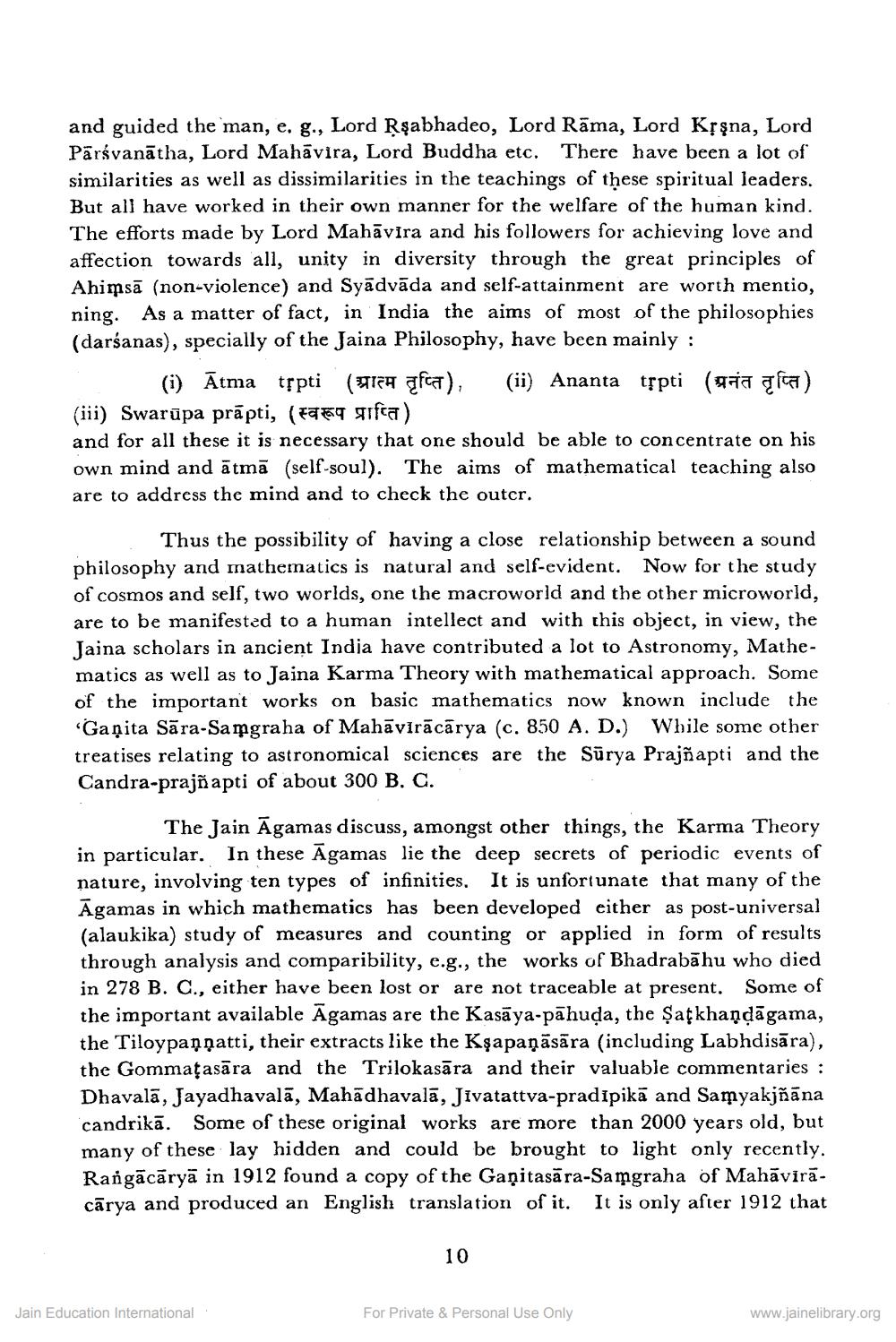________________
and guided the man, e. g., Lord Rşabhadeo, Lord Rama, Lord Krsna, Lord Parsvanātha, Lord Mahāvira, Lord Buddha etc. There have been a lot of similarities as well as dissimilarities in the teachings of these spiritual leaders. But all have worked in their own manner for the welfare of the human kind. The efforts made by Lord Mahāvira and his followers for achieving love and affection towards all, unity in diversity through the great principles of Ahimsā (non-violence) and Syadvāda and self-attainment are worth mentio, ning. As a matter of fact, in India the aims of most of the philosophies (darśanas), specially of the Jaina Philosophy, have been mainly :
(i) Ātma tộpti (91H arca), (ii) Ananta tặpti (1a arca) (iii) Swarūpa prāpti, (FTET grica) and for all these it is necessary that one should be able to concentrate on his own mind and ātmā (self-soul). The aims of mathematical teaching also are to address the mind and to check the outer.
Thus the possibility of having a close relationship between a sound philosophy and mathematics is natural and self-evident. Now for the study of cosmos and self, two worlds, one the macroworld and the other microworld, are to be manifested to a human intellect and with this object, in view, the Jaina scholars in ancient India have contributed a lot to Astronomy, Mathematics as well as to Jaina Karma Theory with mathematical approach. Some of the important works on basic mathematics now known include the Ganita Sāra-Samgraha of Mahāvīrācārya (c. 850 A. D.) While some other treatises relating to astronomical sciences are the Sürya Prajñapti and the Candra-prajñapti of about 300 B. C.
The Jain Āgamas discuss, amongst other things, the Karma Theory in particular. In these Āgamas lie the deep secrets of periodic events of nature, involving ten types of infinities. It is unfortunate that many of the Āgamas in which mathematics has been developed either as post-universal (alaukika) study of measures and counting or applied in form of results through analysis and comparibility, e.g., the works of Bhadrabāhu who died in 278 B. C., either have been lost or are not traceable at present. Some of the important available Āgamas are the Kasāya-pāhuda, the Satkhaņdāgama, the Tiloypaņņatti, their extracts like the Kşapaņāsāra (including Labhdisāra), the Gommațasāra and the Trilokasara and their valuable commentar Dhavala, Jayadhavalā, Mahadhavalā, Jivatattva-pradipikā and Samyakjñāna candrikā. Some of these original works are more than 2000 years old, but many of these lay hidden and could be brought to light only recently. Rangācāryā in 1912 found a copy of the Gaņitasära-Samgraha of Mahāvirācārya and produced an English translation of it. It is only after 1912 that
10
Jain Education International
For Private & Personal Use Only
www.jainelibrary.org




